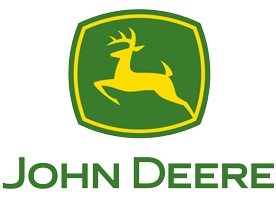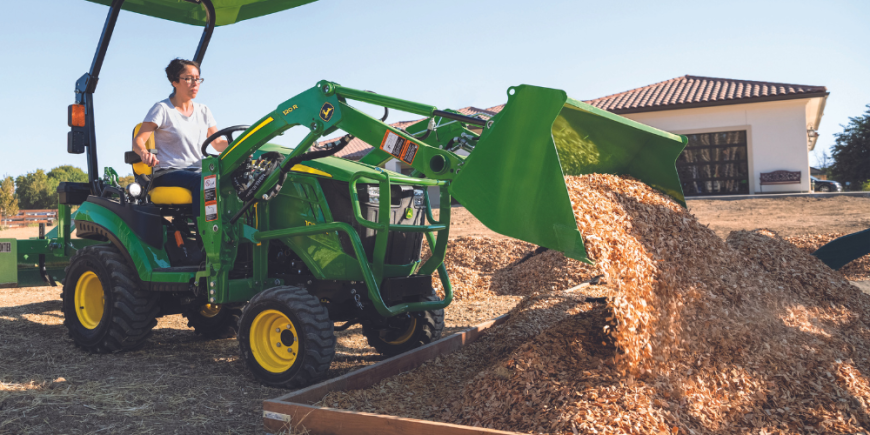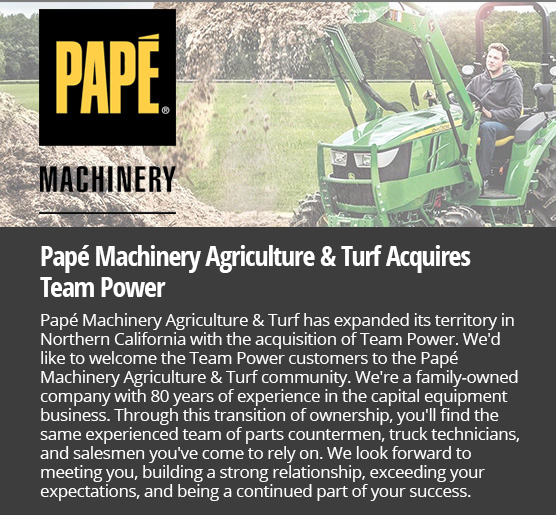When you’re ready to buy a compact utility tractor, there’s plenty to consider. But the most misunderstood factor is horsepower. How much horsepower do you actually need? It can be a challenge to find the sweet spot between not having enough HP and paying for way more than you need. Here are some straightforward guidelines and tips that will help you make a smart decision you won’t regret.
Engine vs. PTO Horsepower
In general, horsepower (HP) is a measurement of how much work a tractor can do within a certain amount of time. Tractors typically have two different horsepower ratings:
- Engine Horsepower: The total power an engine produces.
- PTO (Power Take-Off) Horsepower: The remaining power available to run implements (mowers, tillers, etc.).
Most often, you’ll focus on PTO horsepower when determining which compact utility tractor is appropriate for your use cases, particularly if you plan to run powered attachments. While engine horsepower gives a sense of a tractor’s overall strength, PTO horsepower is the real number to determine when planning work with implements.
Understanding John Deere Compact Utility Tractor Model Numbers
Before we get to the HP recommendations for various use cases, it’s worth taking a moment to discuss how to read a John Deere model number and what you can learn from them. Let’s use the following model number as an example: 3025E
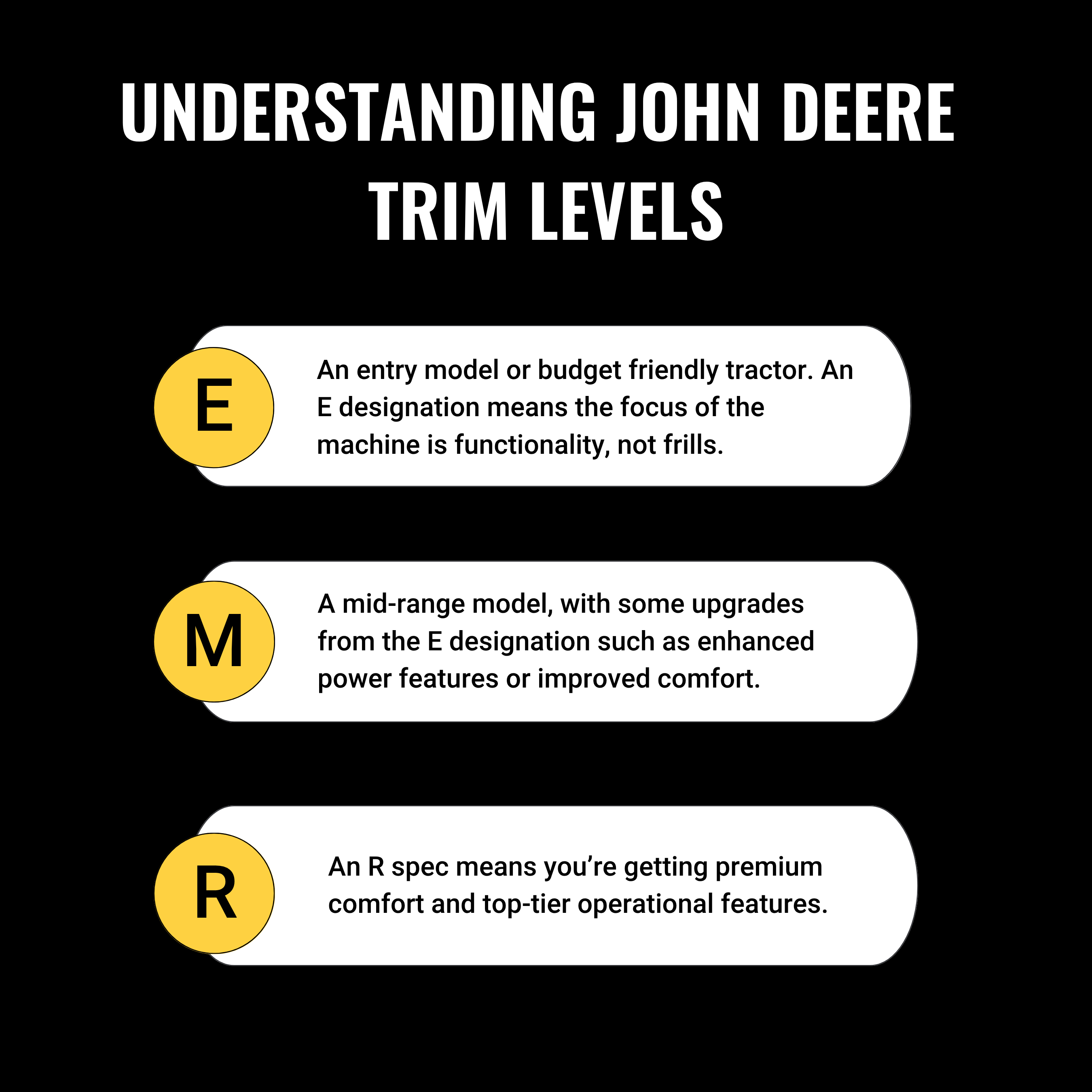
There are three elements that make up a John Deere model number:
- The first digit (3) refers to the series, which is the size category of the tractor.
- The next three digits (025) indicate the engine HP.
- The letter at the end (E) tells you the feature level.
- E – Economy
- M – Mid-level
- R – Premium
Now, when you see a model number like 3025E, you’d read it as “thirty twenty-five E,” understanding that this means a Series 3 Compact Utility Tractor with 25 HP and economy-level features.
Understanding those three components helps you quickly compare tractors across the John Deere lineup and accurately identify the one that fits your needs and budget.
What Size Tractor Do You Need for 5 Acres (or More)?
While it’s impossible to say definitively the exact compact utility tractor size for a given acreage, there are countless other factors and variables beyond property size, the following guidelines should point you in the right direction for where to start your Compact Utility Tractor shopping:
- 1–5 Acres: Compact tractors in the 20–30 HP range (like the John Deere 1 Series and 2 Series) are great for tasks like mowing, light grading, garden preparation, and small trailer towing.
- 6–10 Acres: Mid-sized tractors with 30–50 HP (like the John Deere 3 Series) have enough power for moderate tilling, small hay operations, loader tasks, and some heavier-duty implements.
- 10+ Acres: Larger tractors with 50+ HP (John Deere 4 Series and larger) can handle plowing, baling, and large-scale property management.
But, again, other factors like terrain, soil type, and the specific tasks you need to perform must be considered in addition to the size of your property. If your land has many steep hills or requires a lot of ground-engaging work, that might justify stepping up a size—even if you’re on the lower end of the acreage range.
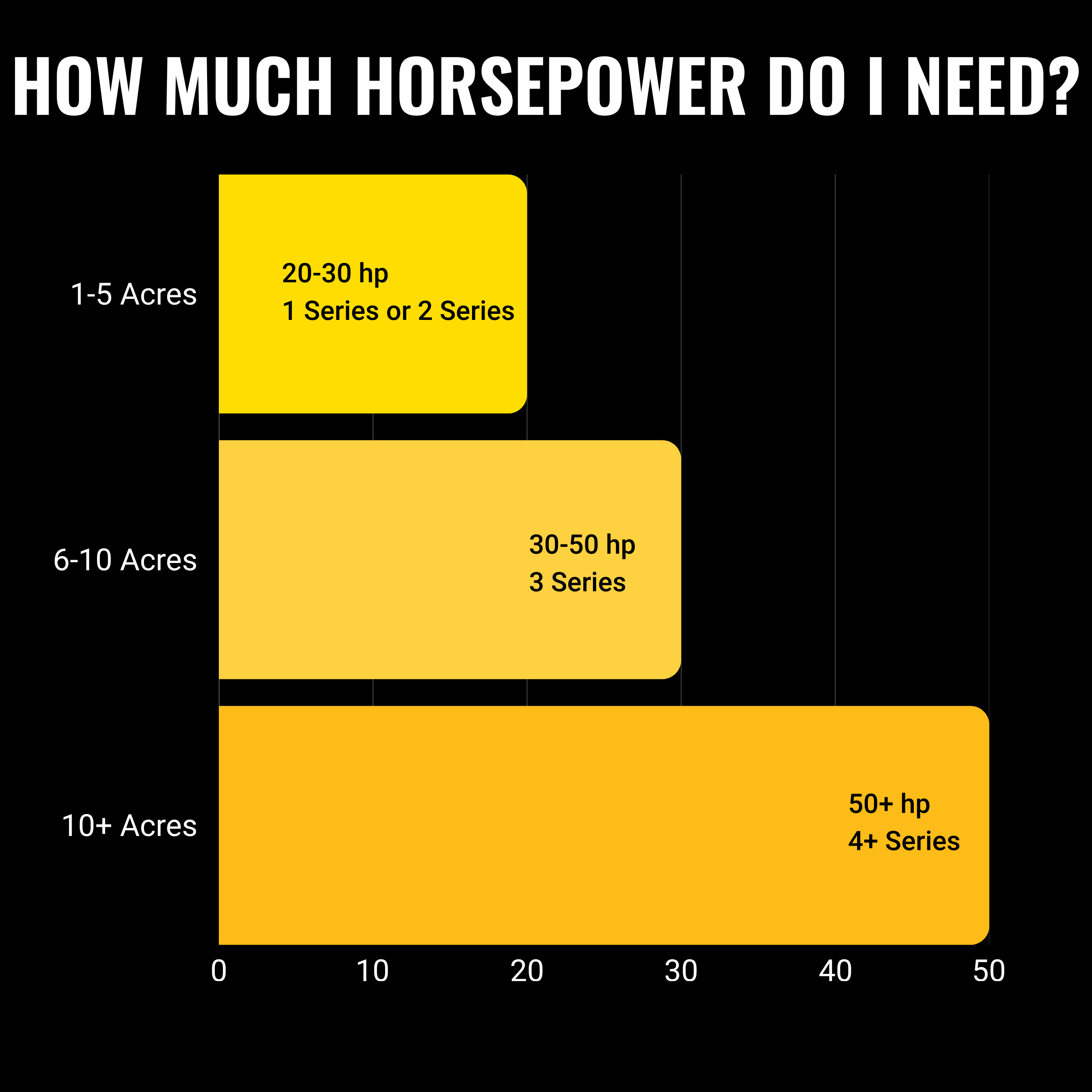
Match Horsepower to the Tasks at Hand
While the size of the area you’ll be working is important, another factor to consider when shopping for a compact utility tractor is what kinds of tasks you’ll be performing. Here’s just a few common tasks and the appropriate tractor HP for each:
Mowing:
- Light mowing (lawns and mostly level fields): 20–25 HP.
- Tall grass and rougher terrains: 25–35 HP.
Tilling:
- Light garden tilling: 25–30 HP.
- Larger gardens, or gardens with heavier soil: 30–40 HP.
Loader Tasks:
- Moving dirt, mulch, gravel: 25–40 HP.
- Intense loader work or use with heavier buckets: 30–40 HP.
Baling and Other Hay Work:
- Small square bales: 40–50 HP.
- Round bales and use with other hay tools: 50+ HP.
Snow Removal:
- With a blower or front blade: 25–35 HP.
Consider the Implements You Intend to Use
You can also work out the horsepower you need by looking at those tasks from a different angle: which tractor implements will you be using? Here’s where PTO horsepower becomes important:
- Rotary Cutters and Mowers: 15–30 PTO HP, depending on its width.
- Tillers: 20–40 PTO HP, depending on tiller size and soil type.
- Blades, Spreaders, and Post Hole Diggers: Usually run well on lower-horsepower tractors (20–30 HP).
If you already own or are considering purchasing specific implements, be sure to check the manufacturer’s minimum PTO requirements before you settle on a compact utility tractor.
Avoid Overestimating Your Needs—Here’s Why
While it might seem like overestimating your needs is the safer option, here’s why erring on the side of getting more than you need could hurt you in the long run:
- Higher Costs: The most immediate drawback of purchasing a larger tractor than necessary is the unnecessary cost. But it’s not just the higher upfront costs of a bigger tractor—in many cases, bigger tractors cost more to maintain, as well. Insurance, fuel, and even replacement parts can add up over time.
- Maneuverability: The bigger the tractor is, the less maneuverable it will be. If you have tight spaces, narrow trails, or small enclosures on your property, buying a bigger tractor can cause frustrations when trying to maneuver around your property.
- Weight: Another potential problem with going too big is the impact of a heavier tractor on your land and soil. A standard lawn could suffer rutting, and some soil types can become compacted by heavier machines.
- Fuel Usage: Larger tractor engines consume more fuel than more compact ones, even when the job is small. Over time, this can result in significantly higher operating costs—especially if you’re doing a lot of stop-and-go work.
Next Steps
Choosing the right horsepower has a lot to do with balance. Consider your property, your workload, and the implements you’ll be using. Then, use this information to plan out and research the wide range of John Deere compact utility tractor options from Papé Machinery Ag & Turf. By focusing realistically on your actual needs, you’ll find the right tractor without overspending.

